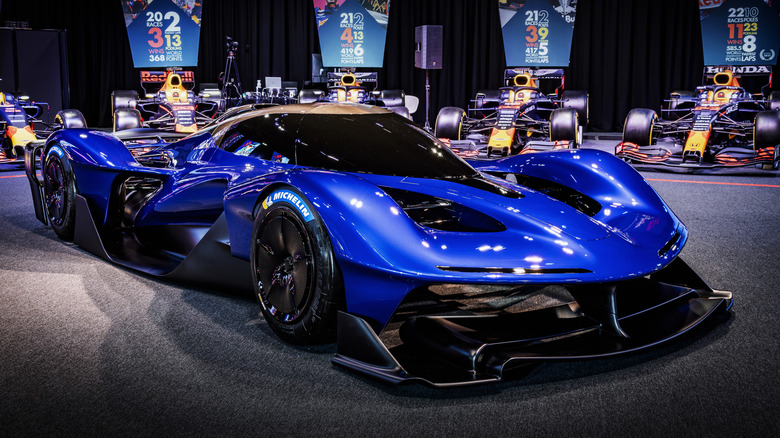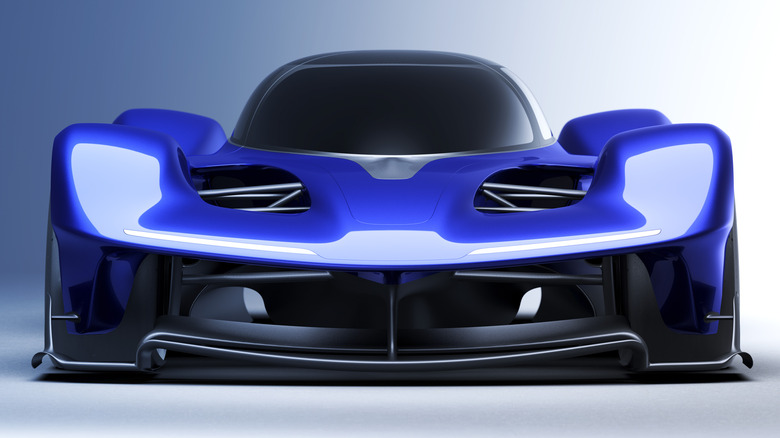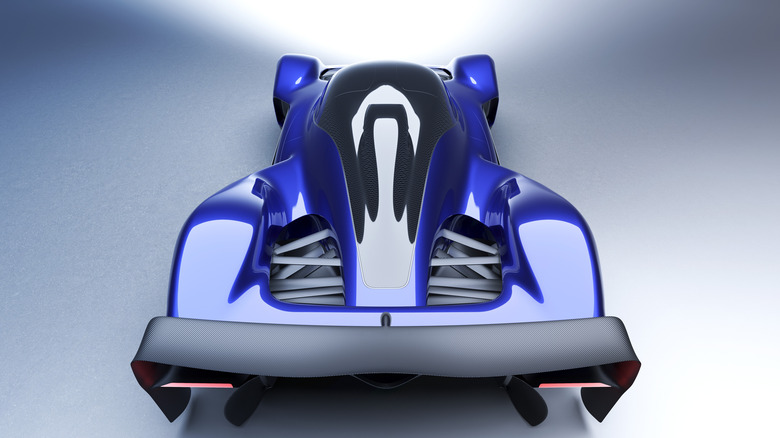This Is The Most Expensive Hypercar You Can Buy In 2025
The most expensive hypercar you can buy in 2025 is not an Italian exotic from Ferrari, Lamborghini or even Pagani, and it's not a Bugatti, either. This is the Red Bull RB17, produced by the people behind the Red Bull Formula 1 cars. It is a limited production (only 50) track car with a price of 5 million British pounds, or just over $6.6 million – plus any additional tariffs that may be levied upon its importation.
Before anyone says, "Wait, there are more expensive cars!" let's establish some ground rules. We are not including any super limited edition models made in quantities of 10 or less, whose waiting list you had to join several years ago, and no, a Rolls-Royce Droptail is not a hypercar. The production-ready Red Bull RB17 was revealed to the public at the 2024 Goodwood Festival of Speed and is slated to start deliveries in 2025. Each year will see 15 examples of the RB 17 produced, each of which will be built to the individual owner's specifications. As with many cars of this type, most of the 50 cars were sold before the official reveal.
There are other benefits that come from owning an RB17. In Red Bull's words, "Each RB17 client is welcomed into the Red Bull family with a full customer journey, including a range of track events giving owners the opportunity to experience some of the world's greatest circuits. One-of-a-kind driver development and tailoring of the car to suit individual driver's needs is part of the unique experience."
What powers the Red Bull RB17?
The two-seater Red Bull RB17 is powered by a naturally aspirated 4.5-liter V10 engine, built by Cosworth, producing 1,000 horsepower. It screams to its 15,000 RPM redline, making it one of the highest-revving engines ever released in a production car. The V10 is mounted in a mid-engine position and acts as a stressed member of the RB17's chassis. Supplementing the engine's already plentiful power is a 200 horsepower electric motor, bringing the total to 1,200 horsepower. This power is then transmitted to the rear wheels by a Red Bull-designed six-speed sequential gearbox made of carbon fiber. The RB17's weight is claimed by Red Bull to be less than 1,984 pounds.
The RB17 is based on a carbon fiber monocoque, and it was designed by famed F1 designer Adrian Newey. Newey is Chief Technical Officer of the Oracle Red Bull Racing Team and has led the team to three Formula 1 World Drivers' Championships in a row, with talented driver Max Verstappen at the wheel. The RB17's pushrod suspension features active roll control and height control. Carbon brakes are standard, along with hydraulically-assisted power steering. Red Bull is developing a trio of tires for the RB17 with Michelin — there will one treaded tire, along with two slick tires with different levels of grip.
Newey is also responsible for the design of the Aston Martin Valkyrie, another extreme hypercar. Like the Valkyrie, the RB17 does without a huge, drag-inducing wing on the back, using active aero and a huge rear diffuser to generate downforce.
Can the RB17 be driven on the street?
The RB17 was conceived as a track car, intended to be used on racetracks worldwide to achieve lap times that are very close to those of an F1 car. It has been conceived for this specific use case, it was never intended for road use, and is completely unrelated to any road car. Even so, a firm that has a solid "track" record of converting track-day cars into street-legal versions has announced their intention to do the same for the Red Bull RB17, and prospective RB17 owners are interested.
That company is Lanzante, a British engineering firm that has previously converted track-only cars that include Pagani's Huayra R and Zonda R, McLaren's P1 GTR and Senna GTR, and Porsche's 935 racer. The conversion will cost up to 500,000 British pounds, or well over $650,000, and that's on top of the price of the RB17 itself. The actual conversion process involves adding items such as the proper street-legal side mirrors, approved lighting systems, and anything else that the country in which the vehicle is being registered for road use may require.


